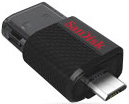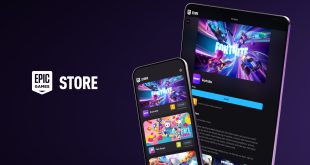SanDisk, one of the world’s largest producers of NAND flash-based devices, has announced its first drive that can be used both with mobile gadgets as well as with PCs since it boasts two interfaces. The SanDisk Ultra dual USB drive will help to quickly free storage space on mobile devices.
The SanDisk Ultra dual USB drive boasts micro-USB as well as full-size USB 2.0 connector to provide a convenient way to transfer content from devices based on Google Android platforms to PCs. Unfortunately, USB 2.0 speed is a bit slow by contemporary standards and you wouldn't want to use it to transfer multiple large files.
SanDisk Ultra Dual USB Drive simply needs to be connected to a mobile gadget supporting USB on-the-go (OTG) to access up to 64GB of ‘plug and play’ storage capacity. In addition, the drive’s dual USB ports feature a retractable cover, meaning no caps to lose while still keeping the connectors safe.
SanDisk is making content organization even more convenient with the SanDisk Memory Zone app, available for download on Google Play. With the SanDisk Memory Zone app, users are able to better organise files stored on internal and external phone memory for management, viewing, copying and backup – further easing the hassle of freeing up the memory on their mobile device.
The SanDisk Ultra Dual USB Drive is available worldwide in 16GB up to 64GB capacities, carrying MSRPs of $19.99 (£12) to $49.99 (£30).
KitGuru: While the idea of adding storage to a mobile device with the help of a USB drive seems to be good, USB 2.0 is clearly out-of-date and in many cases inconvenient by today’s standards.
 KitGuru KitGuru.net – Tech News | Hardware News | Hardware Reviews | IOS | Mobile | Gaming | Graphics Cards
KitGuru KitGuru.net – Tech News | Hardware News | Hardware Reviews | IOS | Mobile | Gaming | Graphics Cards




Or just simply enable the USB Host Controller on your device (If not already enabled). Purchase a USB To Go Cable (or make your own) and plug in and mount your normal pen drives, external hard drives etc.
Speaking of USB3 interfaces in mobile devices, we only see practical uses when the eMMC flash Nand used in the mobile device uses at least v4.5 spec where Samsung has chips for that can do 150MB/s read and 60MB/s write. AT the moment, the pathetic speeds of the NAND flash is really the bottleneck as USB 2.0’s 30MB/s are hardly reached by most nand flash that are less than 20MB/s in read and write speed. So the industry needs to catch up in order for us to really utilize USB3 interface the way it should be used.